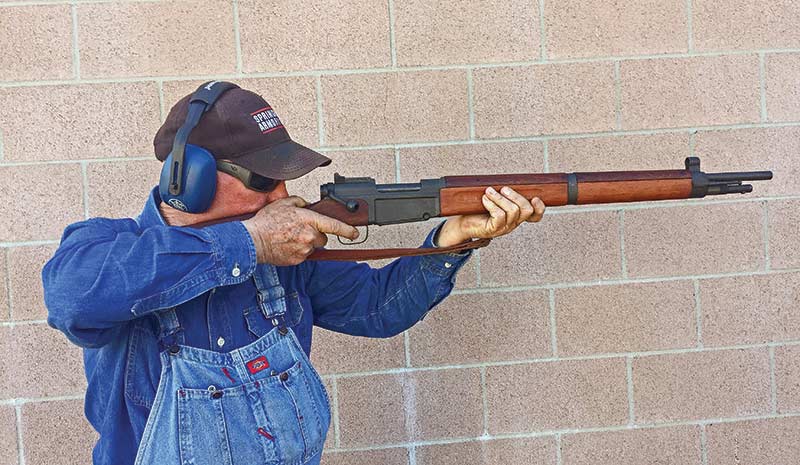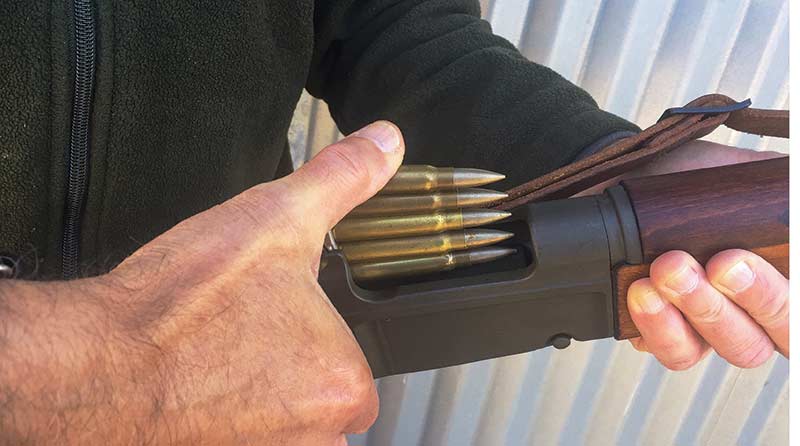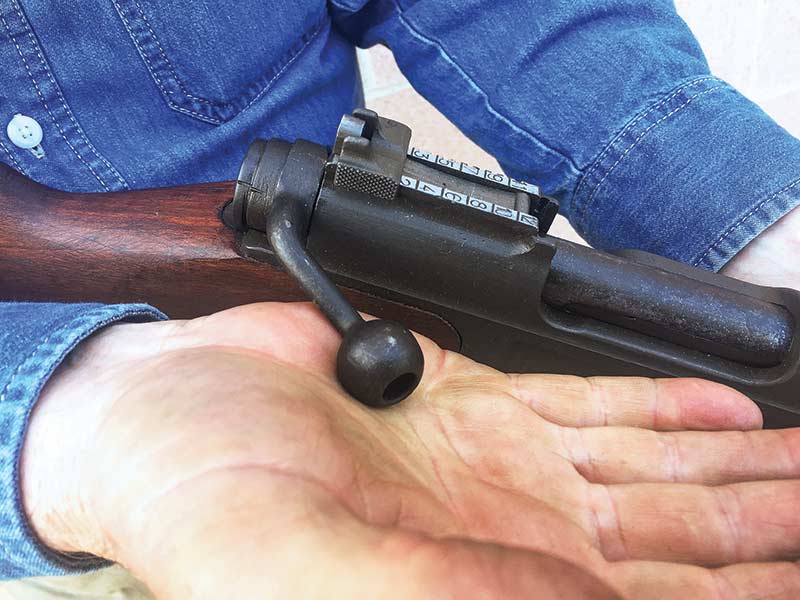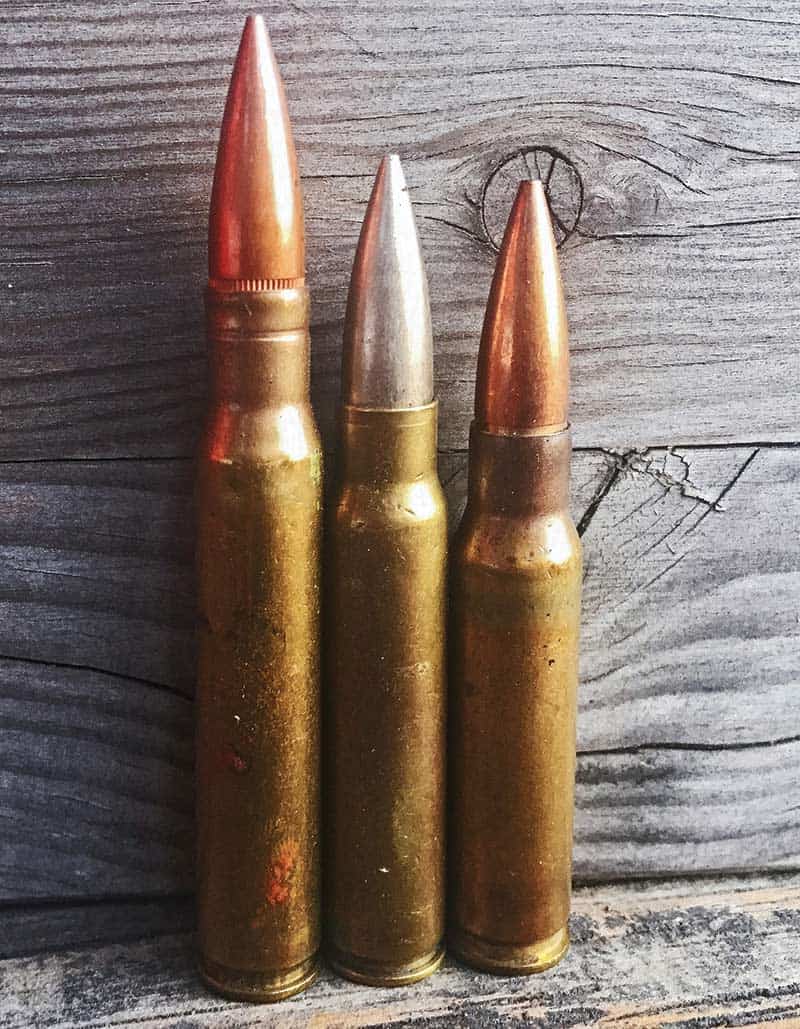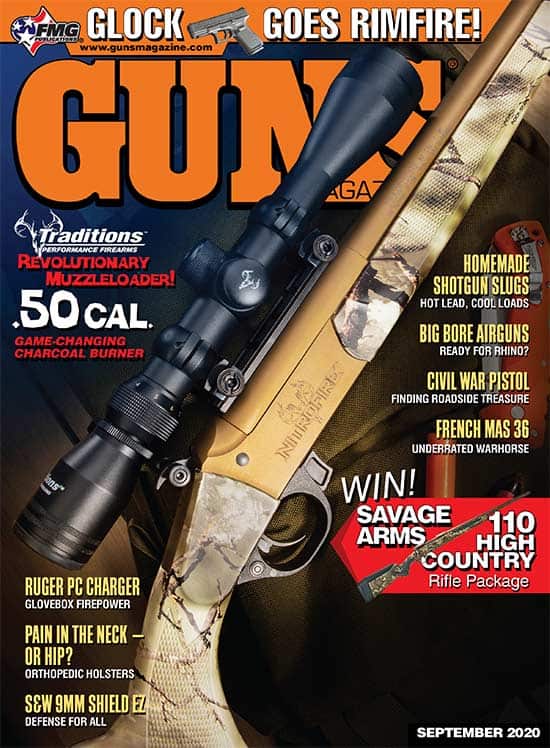Toadstickers, Sights, Stripper Clips
Perhaps the most anachronistic feature of the rifle is its 17″ spike (more correctly, cruciform) bayonet. It definitely resembles something out of the Napoleonic Wars and is stored in an under-muzzle tube alongside the stacking swivel. You simply push a catch, pull it out, reverse it and reinsert in the storage tube with no interference from the side-mounted sling.
It’s very easy to picture French Colonial troops using it to spit and roast chunks of sheep or goat over an open fire in 1943 Tunisia or at Italy’s Gothic Line. It’s considerably more difficult to envision it as a serious last-ditch edged weapon in the same class as a conventional knife-type bayonet.
One of the main gripes I’ve heard concerning the MAS 36 is the “too thick” width of the front sight measuring at 0.89″ since the front sight width of the M1 Garand — which has, for our money, the gold standard of military iron sight arrangements — is 0.78″. Those with a preference for a skinnier blade have a decent argument. What also proved tough for us geezers was the extremely small rear aperture.
If we had our druthers, however, we’d much prefer open ears to protect the front sight rather than the fully enclosed hood that replaced ears on later models such as ours. There are no windage knobs on the tangent-type rear aperture, which has an elevation range to an optimistic 1,200 meters. If a French trooper had a windage issue, he’d require the services of an armorer with specialized tools.
The two-stage trigger pull of our MAS 39 was right at 5.5 lbs. with about three of it on the first stage, along with a bit of creep. But again, this is a mass-produced battle rifle and as such, the trigger is serviceable. So bitching about it from the standards of a “pre-lawyer” Remington M700 is pretty silly. The rifle has no safety, incidentally.
Naturally, like any self-respecting military bolt action since Peter Paul Mauser’s groundbreaking M98, the MAS 36 is fed from 5-round stripper clips. The receiver’s floorplate/follower/magazine spring unit can be removed for cleaning by pressing a pair of opposing buttons.
One of the most eye-catching features of the MAS 36 is, of course, the dog-leg bolt. It’s angled forward, almost radically so, which has two main advantages. It simplifies rapid palm-up bolt manipulation and prevents your trigger finger from getting banged by the bolt knob in recoil. It’s a short, easy throw, helped in part by the rear-lug construction of the bolt, not too dissimilar from Remington’s late, lamented Model 788 sporter.
